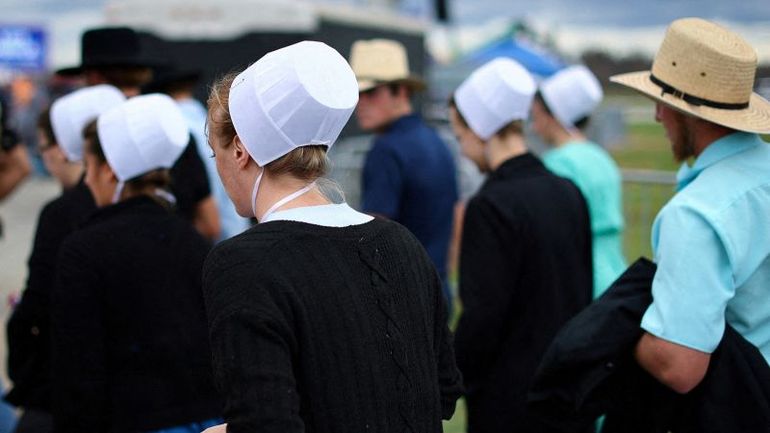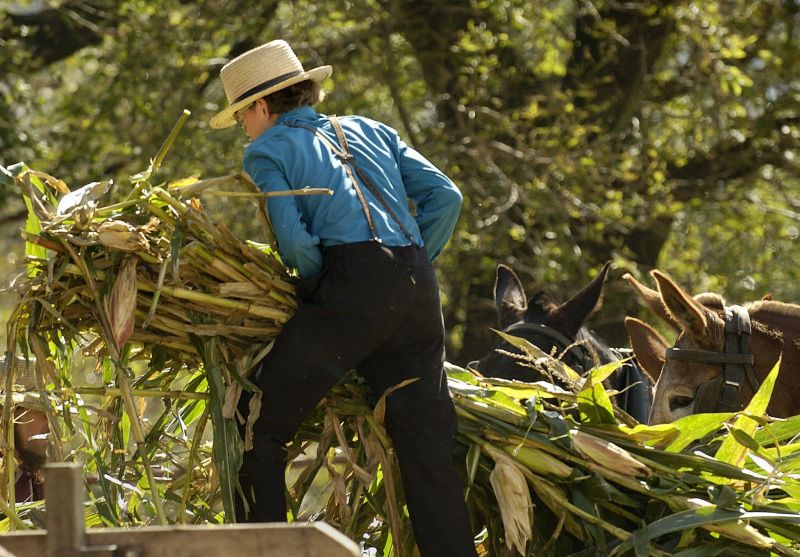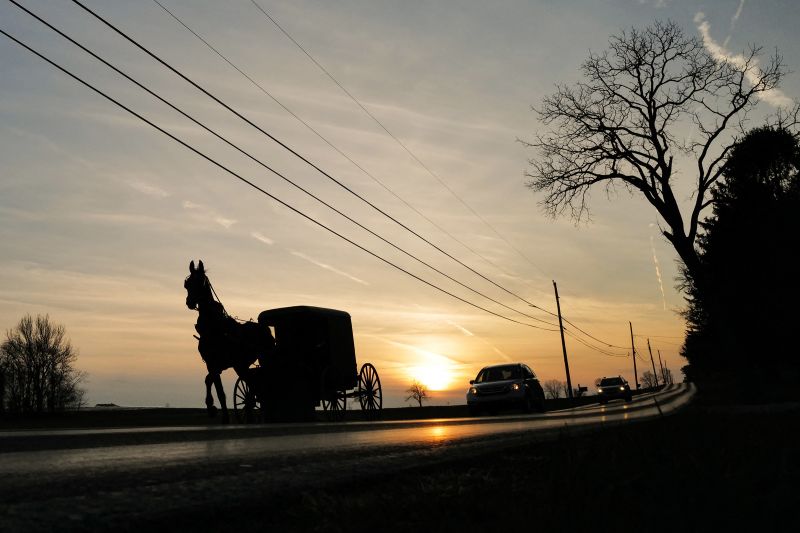
Understanding the Unique Tradition of Rumspringa Among Amish Youth

Discover the true meaning behind Rumspringa for the Amish community, a tradition that defies common stereotypes portrayed in popular media.
The concept of “Rumspringa” holds a special place in American culture. It is a traditional phase for young individuals in certain Amish groups, often viewed by outsiders as a period of freedom from strict Amish customs, allowing teenagers to explore worldly temptations.
Although this may be the case in some Amish communities, Rumspringa is actually a broader and usually less wild term for a significant period of reflection in the life of an Amish youth.
Like so many cultural practices, the specifics vary from group to group. This in turn reveals another truth: Amish culture itself is far from a monolith.
The basics of Amish culture
Before diving into the concept of Rumspringa, it is important to have a basic understanding of Amish communities in America. The Amish are considered an ethnoreligious group, which means that their identity is deeply connected to both their religion and their shared culture and ancestry. Specifically, the Amish are traditional Anabaptists, a branch of Christianity with origins in Germany, Switzerland, the Netherlands, and other European countries, who have settled in the United States.
The roots of Amish beliefs can be traced back to Switzerland during the Protestant reformation of the 16th century. As a time of significant change in Christian religious practices, the Amish emerged as a distinct group. By the early 1700s, Amish individuals started migrating from Europe to the United States, primarily establishing themselves in Pennsylvania before spreading to neighboring states and parts of southeastern Canada.
Amish communities may share common beliefs, but their practices can vary based on factors such as region, levels of religious and cultural conservatism, and specific heritage. In Lancaster County, Pennsylvania, the largest Amish population in the US can be found, totaling around 30,000 individuals. Within this population, there are approximately 229 distinct Amish districts, each with its own unique subculture.
Their way of life is typically characterized by simplicity, influenced by their interpretation of the Bible which encourages a rejection of material possessions and luxuries. Amish communities revolve around rural activities such as farming and handcrafts, with a strong emphasis on the importance of family. It is common to see large families residing together and working together to fulfill community obligations.
The Amish people value traits such as obedience, pacifism, and humility. They choose to dress in plain clothing and do not wear jewelry or other decorations. Additionally, the Amish are known for their limited use of modern technology. Some communities completely avoid tools like cars, phones, and computers, while others may allow certain devices like battery-operated radios or telephones for specific purposes such as work.
RELATED ARTICLE: What do Mormons believe?
Rumspringa is a term of Pennsylvania German descent, derived from the German word "herumspringen," meaning "to run/jump around." This rite typically begins for teenagers around the age of 16 and is seen as a transitional period between childhood and adulthood.
During Rumspringa, teenagers in the Amish community are given more freedom compared to younger members and can engage in activities that are typically discouraged.
Despite what documentaries and media portray, Rumspringa is not just about wild partying away from home. Essentially, it is a term used by the Amish to refer to the teenage years.
An Amish boy picks up stalks of harvested corn near Paradise, Pennsylvania, in 2004.
An Amish boy picks up stalks of harvested corn near Paradise, Pennsylvania, in 2004.
Richard A. Stevick, a professor at Messiah University in Mechanicsburg, Pennsylvania, has been studying Amish culture for 40 years. According to him, many teenagers going through Rumspringa, which lasts about two years, often do not leave home or make drastic changes in their behavior during this time.
"The public interest in Rumspringa would be significantly lower if books and documentaries didn't always focus on the most extreme cases," he explains. "For most Amish teenagers, Rumspringa is a period where they can explore Amish life without feeling restricted by their parents. It's important to remember that family and hierarchy hold great significance in their culture."
During Rumspringa, some young individuals may engage in sports and social events, or participate in activities typically reserved for adults within their community. According to Stevick, this time is also dedicated to courtship and, depending on the specific community, arranging potential future marriages.
During this time, an Amish teenager may also join a social group of peers within their community. Their Rumspringa experience, then, would be heavily influenced by the type of group they join.
The point of Rumspringa, according to Stevick, is for young people to make an informed decision about whether they want to commit to the Amish lifestyle as an adult.
"Just being born into an Amish community doesn't automatically mean you are living the Amish lifestyle," explains Stevick. "To truly become a part of the community, adults must make the conscious decision to be baptized. This decision-making process often takes place during Rumspringa."
The modern challenges of Rumspringa
Stevick is fascinated by how social media and modern ideas have impacted the tradition of Rumspringa for Amish teenagers and outsiders curious about this unique coming-of-age experience.
According to Stevick, many young people who go through Rumspringa eventually integrate back into their communities as adults. However, in recent years, the exposure to the outside world has increased significantly, allowing them to learn and explore more than ever before.
An Amish buggy shares the road with automobiles in Strasburg, Pennsylvania.
An Amish buggy shares the road with automobiles in Strasburg, Pennsylvania.
Many people may decide to leave their current way of life due to the influence of modern technologies. However, they might also be inspired to explore alternative lifestyles or more progressive beliefs because of the knowledge and information accessible through modern technology.
It is difficult to determine the exact number of Amish teens who leave their communities after Rumspringa. However, Stevick suggests that overall, the numbers are low. He notes that the stricter the community, the higher the retention rate.
Stevick explains that the teenagers most at risk of leaving are those who have access to phones. Having a phone can expose them to the outside world and different possibilities beyond their traditional way of life.
In his years of working with the Amish community, Stevick has been touched by their strong spirit, the kindness they share, and their apparent contentment in life. Despite the potential for conflict, he finds that the Amish display resilience and a sense of fulfillment.
Stevick acknowledges that every group has its challenges, including individuals with difficulties or lacking in moral values. However, he observes that the Amish lead lives filled with both struggles and moments of happiness.
Editor's P/S:
The article on Rumspringa provides a balanced perspective on this unique tradition within Amish communities. It dispels misconceptions that Rumspringa is solely about wild partying and reveals its true nature as a period of reflection and decision-making for Amish teenagers. The article emphasizes the diversity within Amish culture and the importance of understanding the nuances of each community.
The discussion on the modern challenges of Rumspringa is particularly insightful. It highlights the impact of social media and technology on Amish youth, who are increasingly exposed to outside influences. While this exposure can broaden their perspectives, it also poses challenges to their traditional way of life. The article suggests that access to phones and the internet may increase the likelihood of Amish teens leaving their communities after Rumspringa. However, it also acknowledges the resilience and contentment that characterize the Amish community, despite these challenges.








